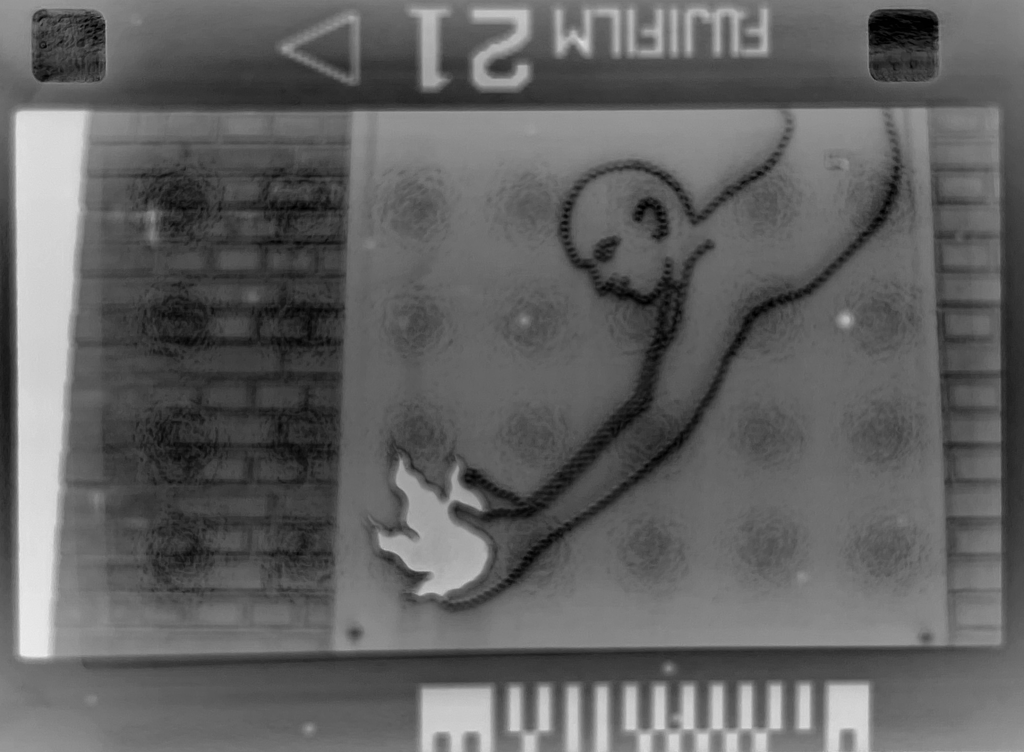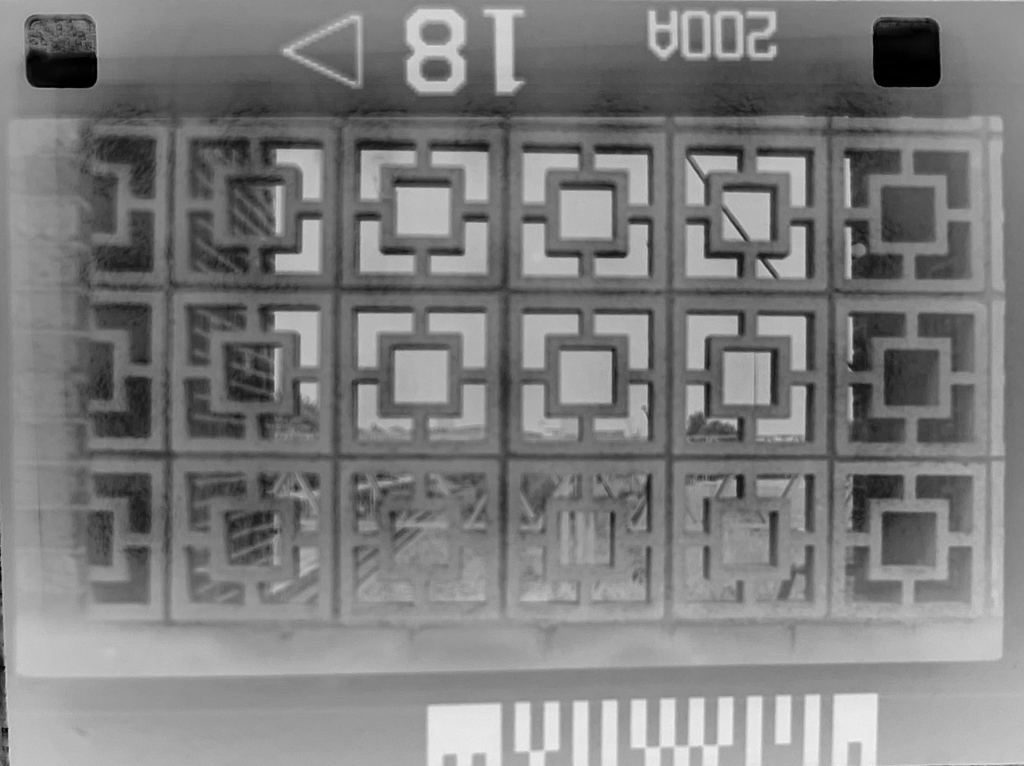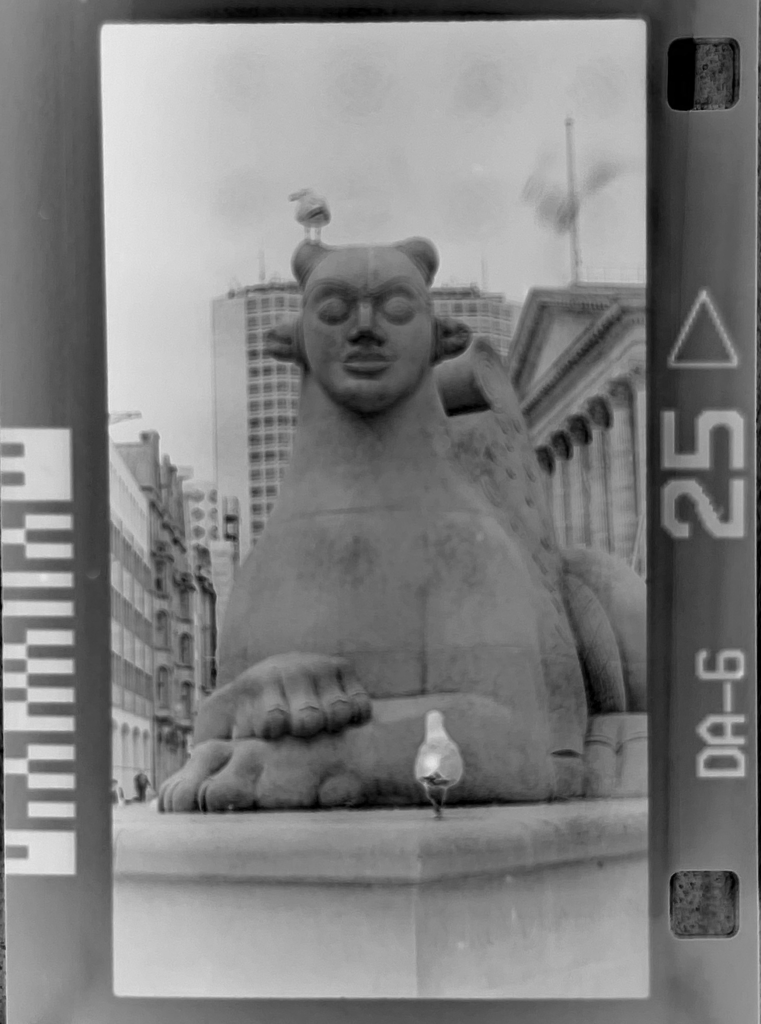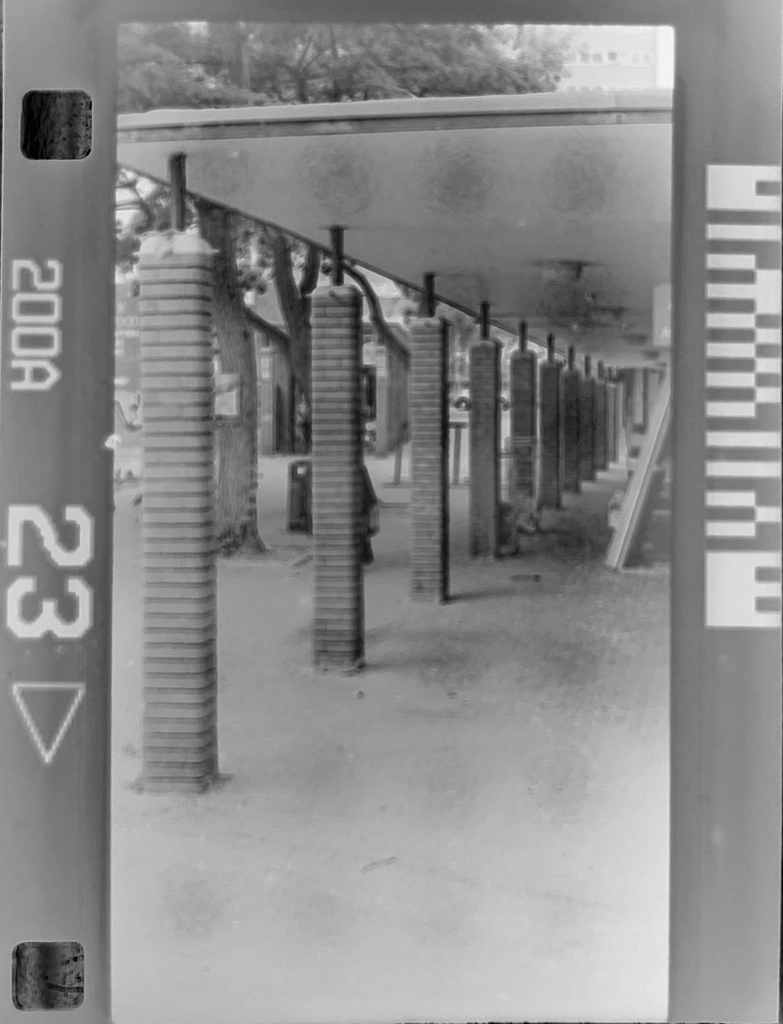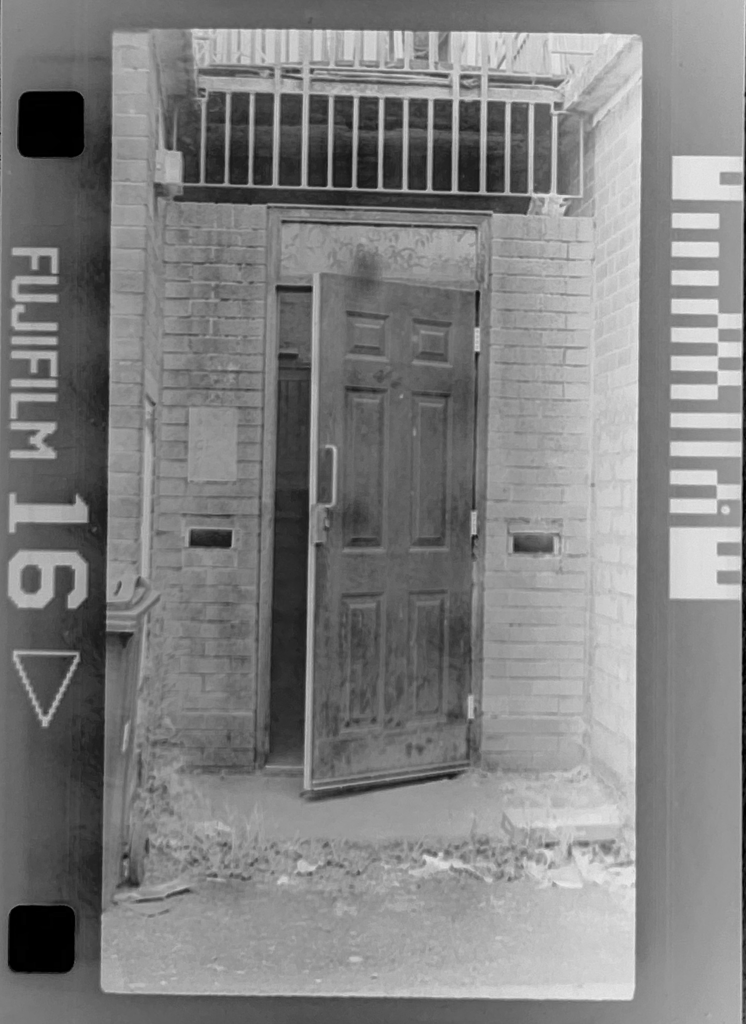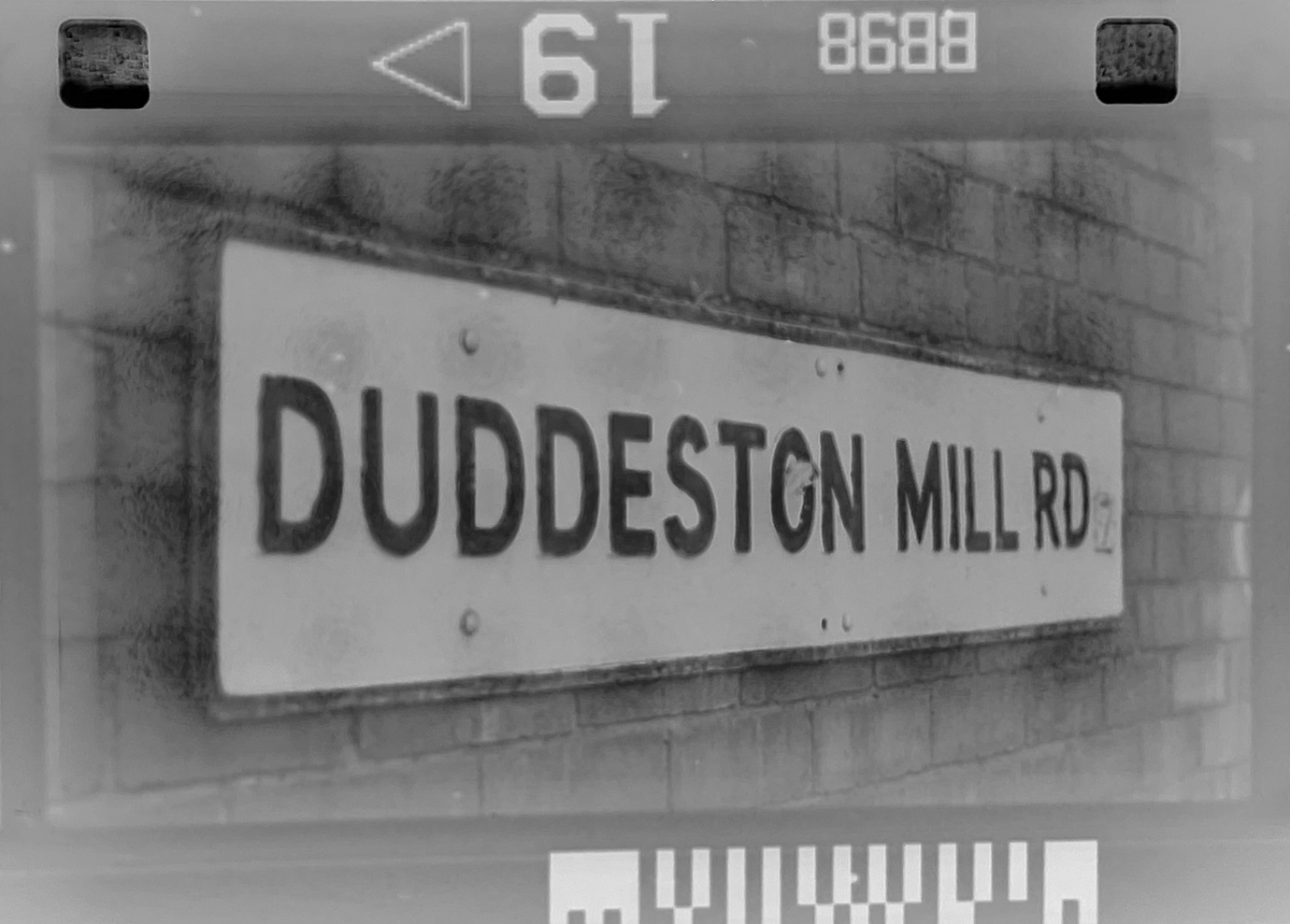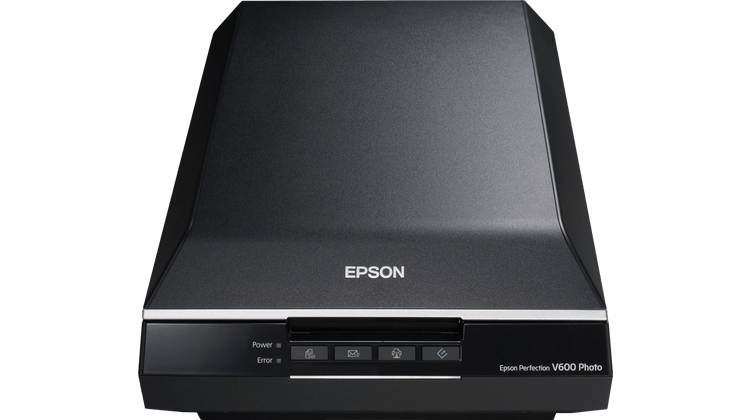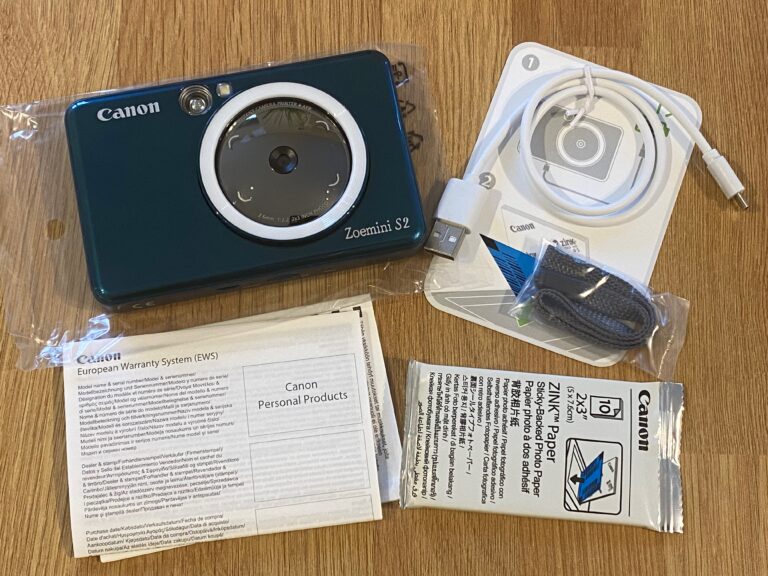One thing about film photography is that once you scratch beneath the 35mm and 120 film surface, you discover that there have been countless different formats that have come and gone for various reasons. APS is just one of those historic attempts at doing something different in an effort to standardise on a form factor that was believed, by the designers, to be revolutionary and more advantageous than what had gone before. APS started with good intentions, but some design choices meant it was dead before it had even launched.
In this review:
- Introduction and background
- Benefitting from depreciation
- Finding and developing APS films
- Design, Ergonomics and Handling
- Performance – What’s it like to use?
- Image quality
- Conclusions and final thoughts
- Sample image gallery
Introduction and background
APS film went to market in 1996 and in the same year Canon quickly followed with their first APS compatible SLR the EOS IX. This was a seriously futuristic looking camera that seemed to be a mash up of the super compact Ixus cameras and a traditional SLR like the later EOS 300V.
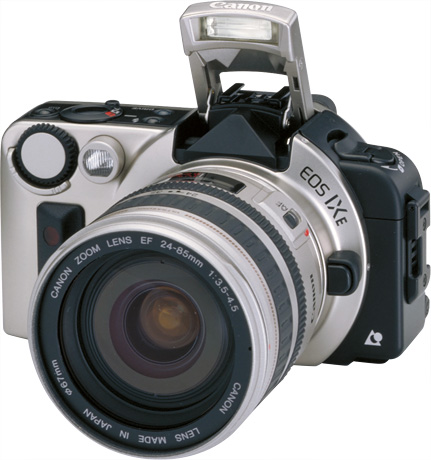
The IX was initially priced somewhat ambitiously at $999 on launch. Not too long later, the same camera could be found being sold off for far less, sometimes as low as $2-300. So what went wrong?
Other than the price, the IX tried to be a jack of all trades and was sadly a master of none. Those who were into photography already owned one of Canon’s very capable SLRs and lenses. What was their motivation to buy the APS version?
APS was firmly aimed at making the life of consumers easier. It auto loaded, did lots of cool tricks like writing data to the negative, winding the film in and out without any intervention and it even showed you whether a roll was fully, partially or not at all exposed. But it also offered nothing to anyone who understood the existing 35mm standard.
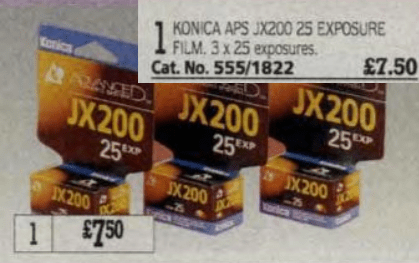 Whilst not extortionate, APS was significantly more expensive. (Argos Autumn 1998) | 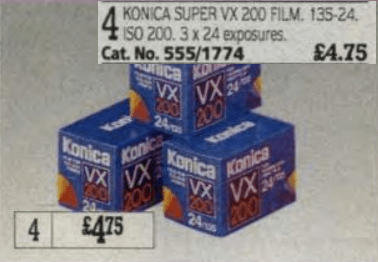 Although 1 fewer frame per roll, 35mm was absurd value for money in 1998. |
APS was more expensive per roll than 35mm, the picture size was physically smaller meaning lower quality enlargements or scans and in an SLR format it multiplied the focal length of lenses by approximately 1.2x. Coincidentally, this legacy lives on strong even today in digital cameras which use APS-C sensors, they are actually based on the APS film frame size and suffer the same focal length multiplier downside.
So, for the existing SLR user APS offered basically no incentive to change. The mix of SLR with APS was intriguing and did have one benefit and that was the size and weight of a body. With an APS SLR you could suddenly make the body much smaller, much lighter and that made it a great potential option for travel and street work. Why didn’t it catch on? Remember that price again?
The IX was pretty much a failure in the scale of success Canon had been used to with traditional 35mm cameras. Reviewers and users alike bemoaned the lack of features they were used to, the change in focal length, the dimmer view finders and the fact that the bodies did not share the same familiar, intuitive control layout they were used to and Canon was famed for.
Surprisingly, then, they did have another bash at an APS SLR body only two years later in the form of the IX7. No, I have no idea what the nomenclature means either, especially as this was seen as the lite (their words) version of the original IX.
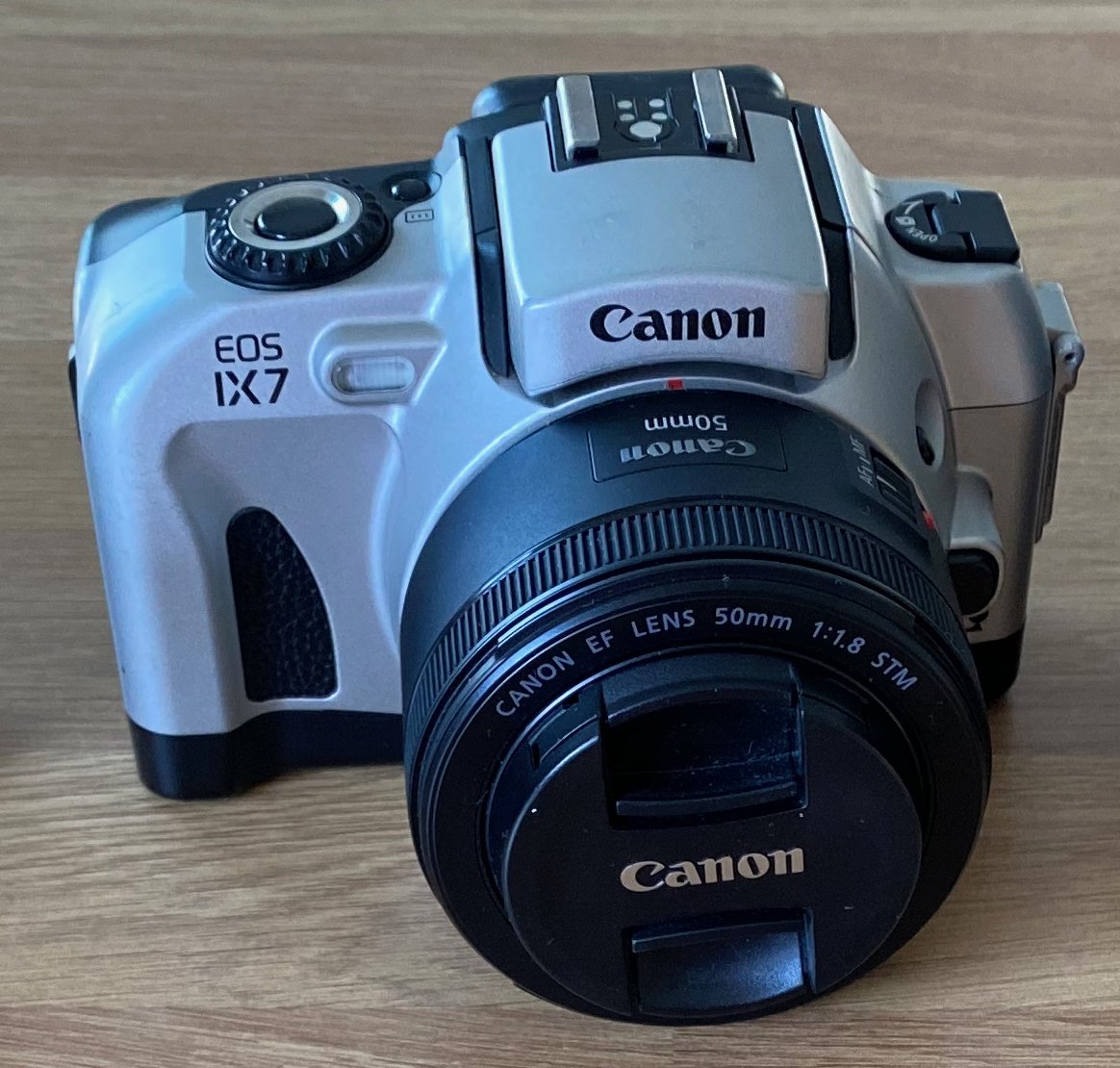 | 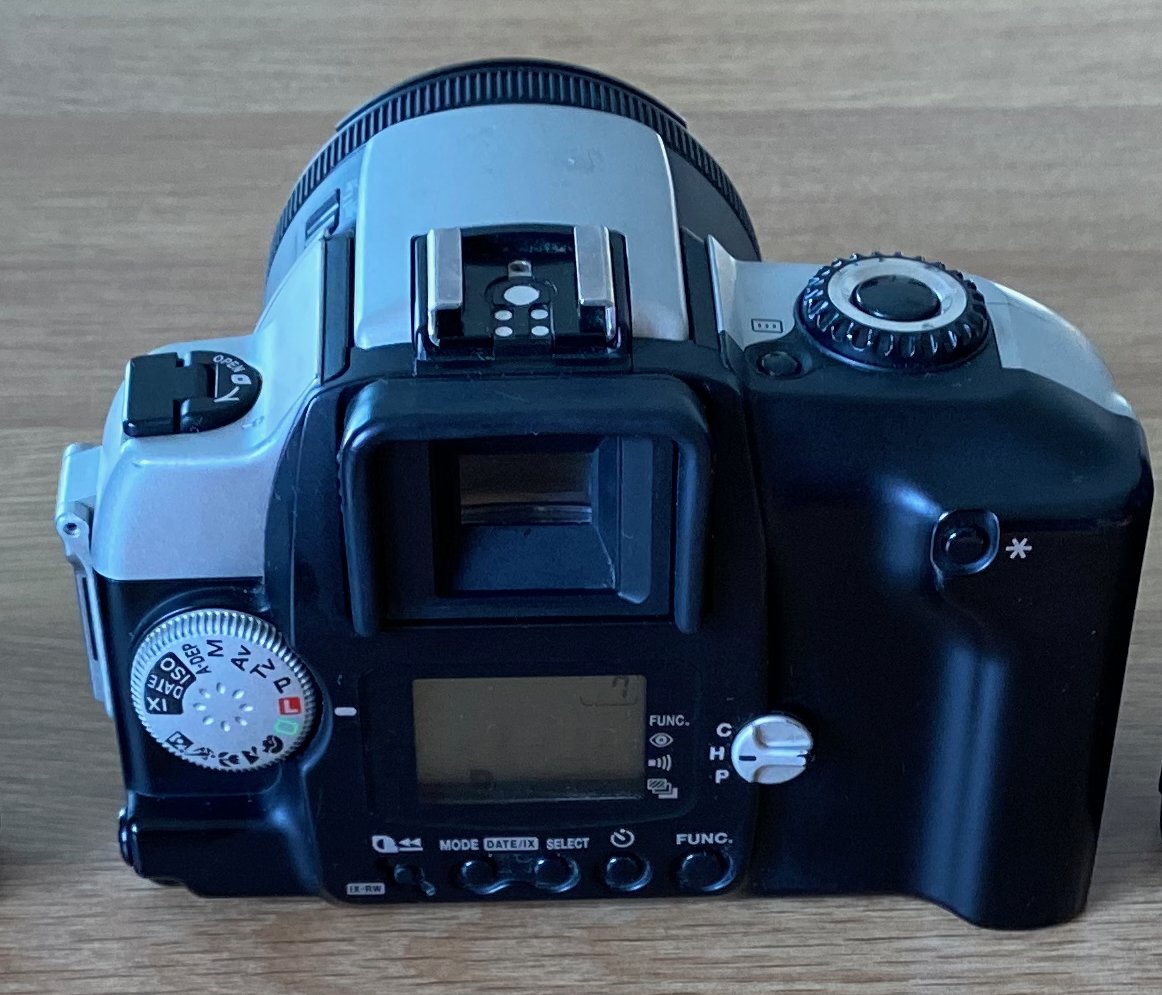 |
So little has been written or said about the IX7 that it doesn’t even have a Wikipedia page. It launched for a far more sensible £399 in the UK, which is still a hefty chunk of cash, equating to approximately £650 in 2022. You had to really want that APS convenience and small body size to buy this.
Benefitting from depreciation
I bought my copy for a single bid of £6.99 and £5.20 to post it, so £12.19 all in. The equivalent of approximately £7.50 in 1998 if we’re being silly about it. Depreciation has not been kind to this series of cameras.
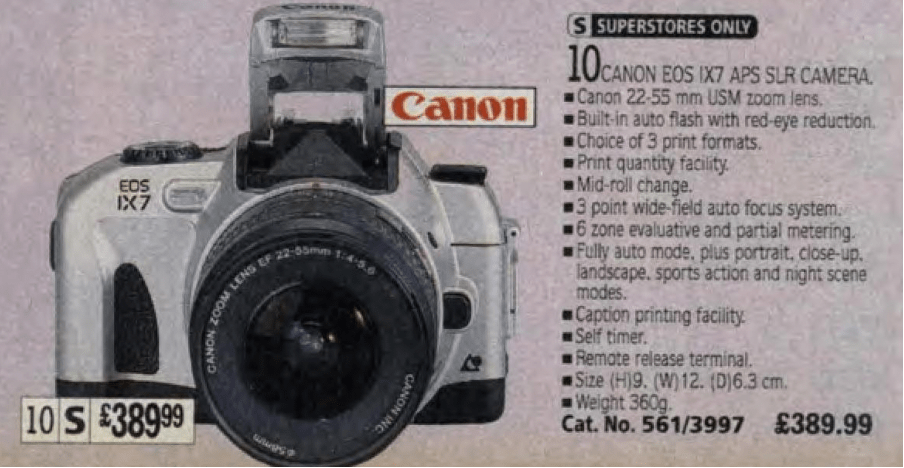
It was listed as being in excellent condition, but it was clear from the pictures that it had seen a reasonable amount of use. I didn’t really care too much for condition being as this was intended to be an almost one shot, one use body. All the bits and pieces seemed to be present, but there was one thing in particular I noticed in the pictures which made this copy far more attractive than any others. See for yourself:
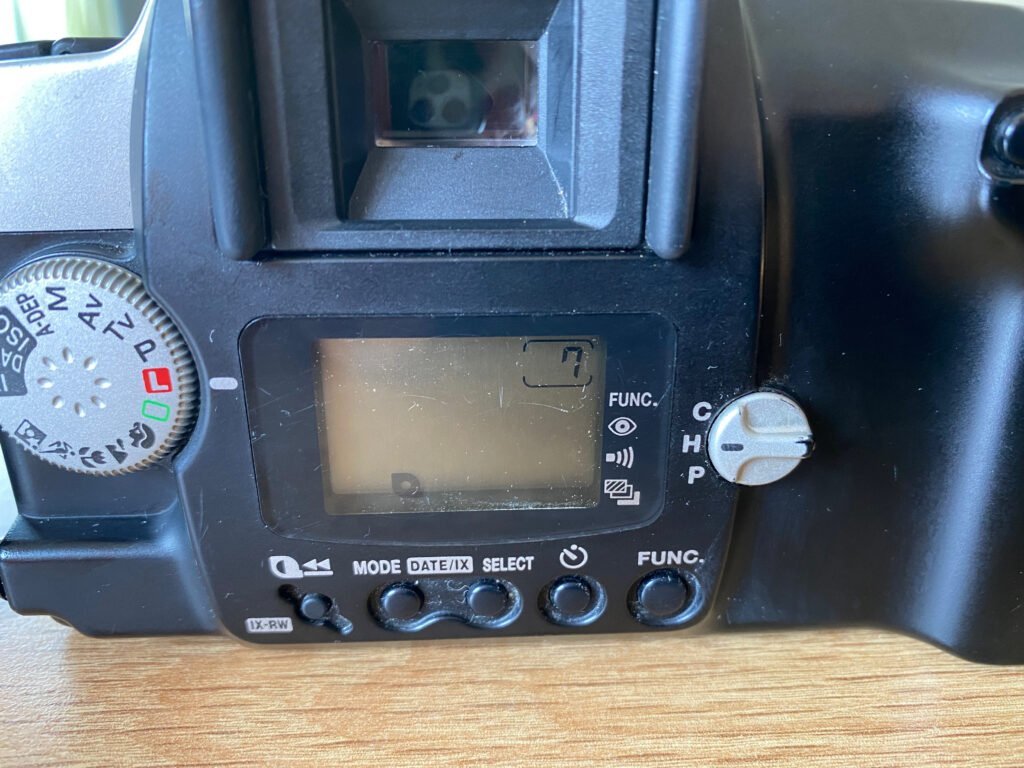
Yes, it has 7 frames already shot on a film inside it. Not only is this a nice bonus if we uncover some interesting images from the 1990’s on there (unlikely, but you live in hope) but as APS film is stupidly expensive now because absolutely no one manufactures it any more, I find myself quids in as they say. The seller must’ve been feeling particularly generous, however, as a new and unused roll of film fell out of the box when I opened it. I have managed to buy an APS SLR for the price of a single APS film.
Finding and developing APS films
I’m actually in quite a silly position now with this camera. I had initially planned to just run a single roll of film through it because of the difficulty in developing and the price of film. I simply wanted to get a feeling for what it would’ve been like to experience this when it came out in 1998. In being prepared, I picked up 5 APS films for an extortionate amount (2 and a half IX7’s worth) before buying the camera itself. I now have 7 APS films. Seven.
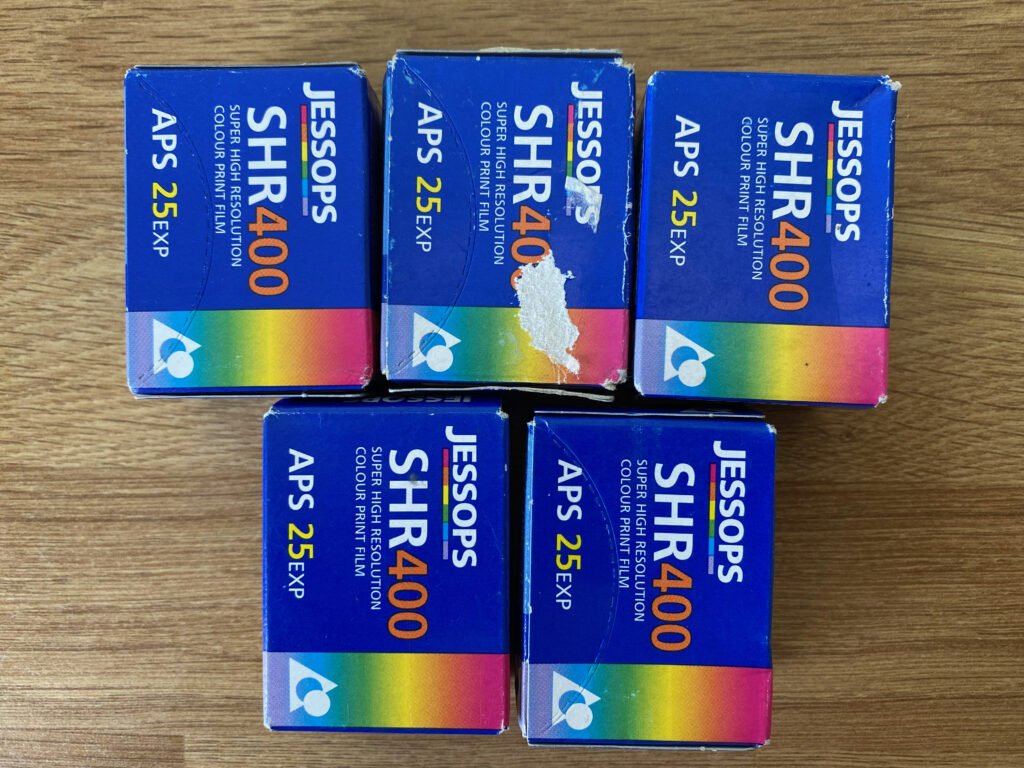
The only slight problem remaining now is that there is no sensible way to develop APS film. You can, of course, send it away to a few niche shops who still retain their APS kit, but that’s very expensive and also takes away the entire point in shooting film – developing it yourself.
This problem was partially solved when I found a 3D printable developing reel online and, after branding myself on the print head of our 3D printer at work, I gave up trying to resurrect our old, knackered printer and sent it off to www.surfacescan.co.uk to have it made on a half decent machine. Surface Scan were cheap, took a few days but eventually it was sent in the post and the quality was very good.
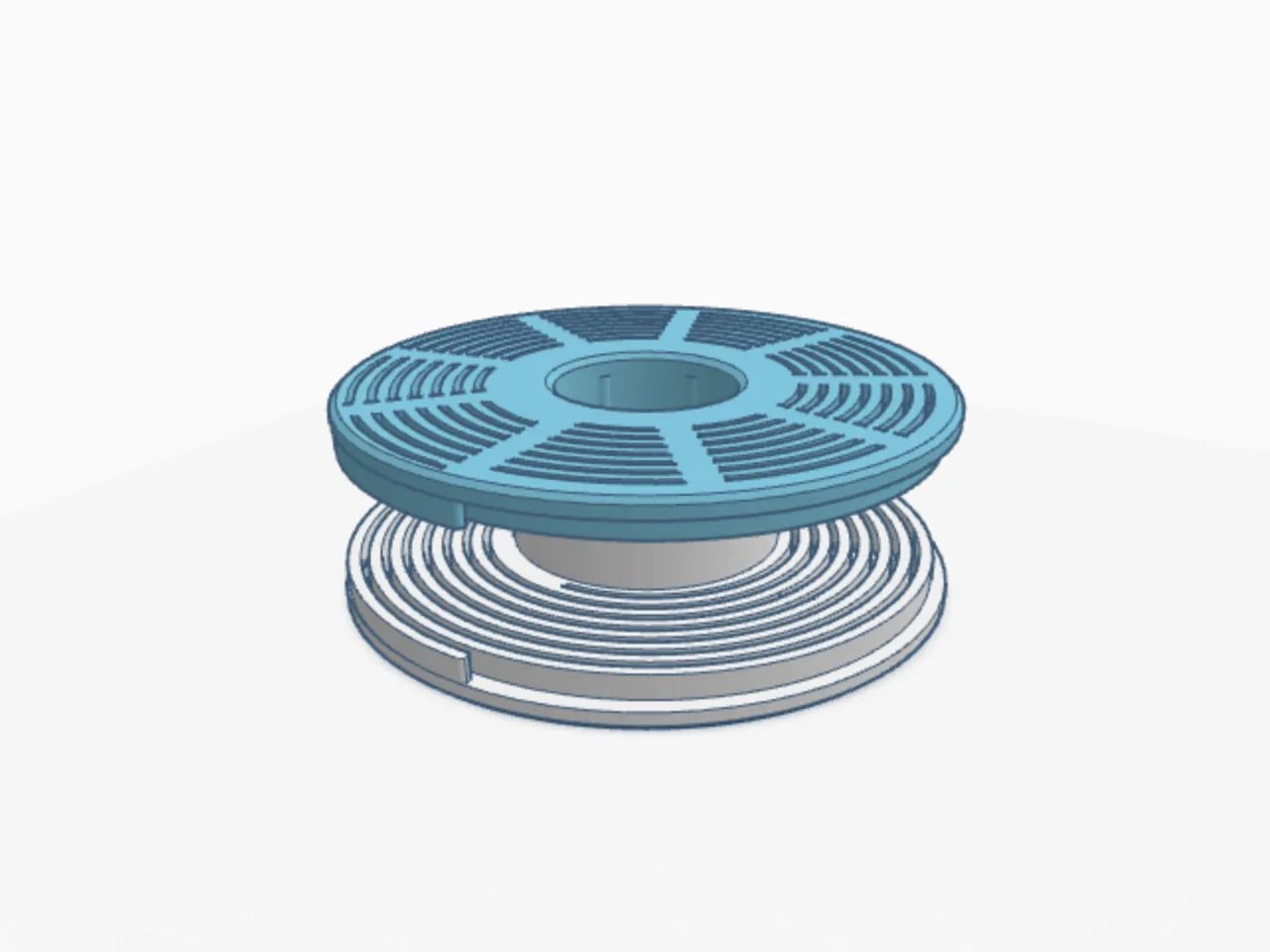 The design…. | 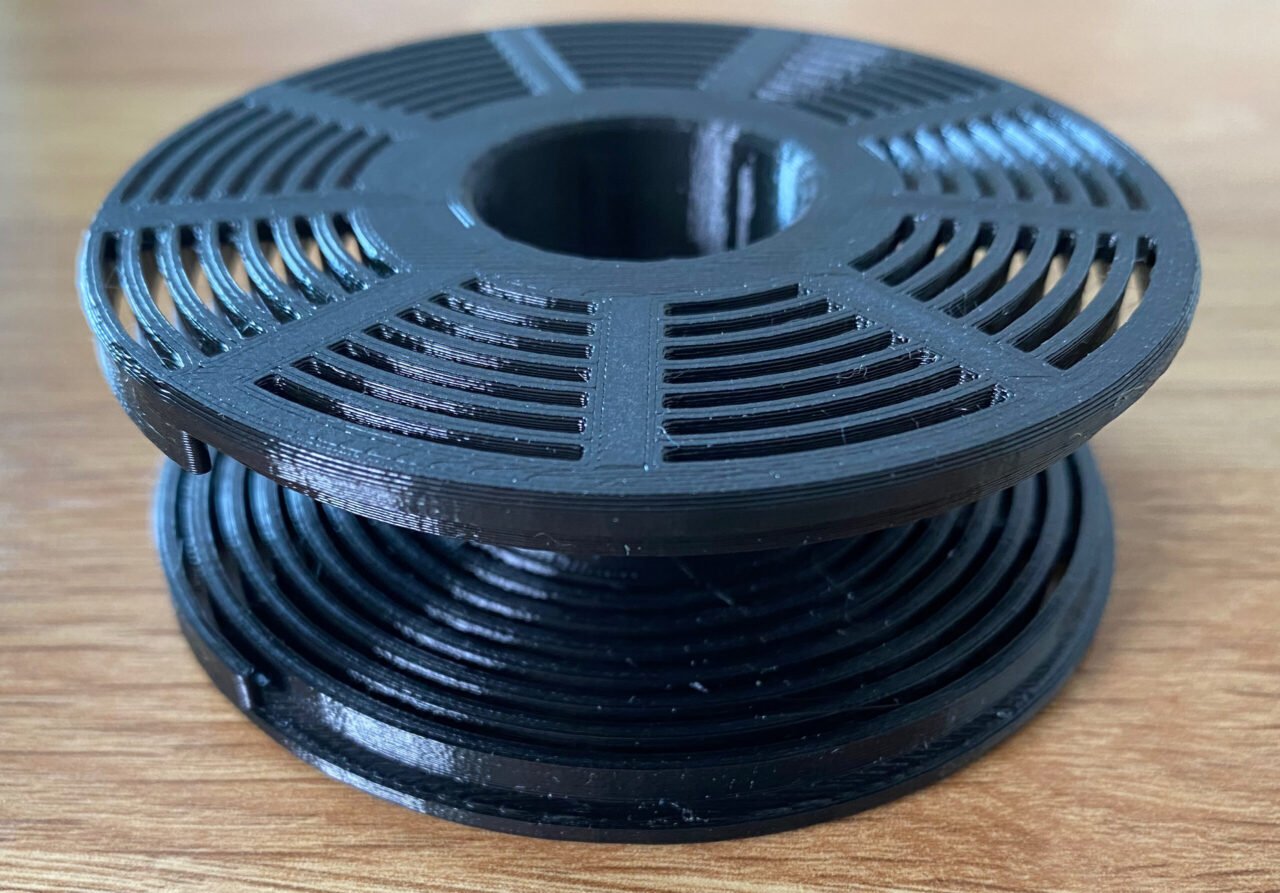 The real thing… |
More on the development process later. Having now got all my things together, and having given the IX7 the compulsory 99% alcohol and toothbrush bath, such a lightweight and compact body as this was screaming out to have a 50mm lens attached to it and to go on a walk, so that’s exactly what I did.
Design, Ergonomics and Handling
The design language of the IX7 is definitely very late 90’s “vision of the future” – silver, curvy and compact. The images don’t really convey how compact the body is, with the lens off it looks quite funny because most of the front of the camera is just a giant black hole.
Handling can be described as ok. There’s not a lot of attention that’s been paid to comfort and ergonomic fit in terms of holding it for any prolonged period of time. Due to the light weight, the lack of a proper grip doesn’t really affect the handling as much as I first thought it might but it certainly isn’t meant for long periods of use. It’s got a really quite odd “reverse grip” bulge on the back which I think was added to give some extra depth to the camera to make it easier to hold. On the positive side, the body is well balanced with a light lens attached and you generally end up using the lens as the main grip of the camera.
Controls wise it’s a different story. Many compromises have been made in the placement, style and function of the various buttons and wheels. The large display is not actually that useful when shooting and so a lot of space has been wasted where other things could, and should, have been.
Bizarrely, the mode dial is placed on the back left of the body and it’s actually quite difficult to get your fingers on and grip it to turn. The usual place for this selection dial is on top of the body, which makes for easy access but also keeps it out of the way as you don’t tend to switch modes all that often during use. This decision has almost certainly been taken just to keep the look and feel of the camera “clean” by flattening out the lumps and bumps on top. Indeed, none of the most useful controls are actually where they should be and most buttons on the back are redundant during normal use.
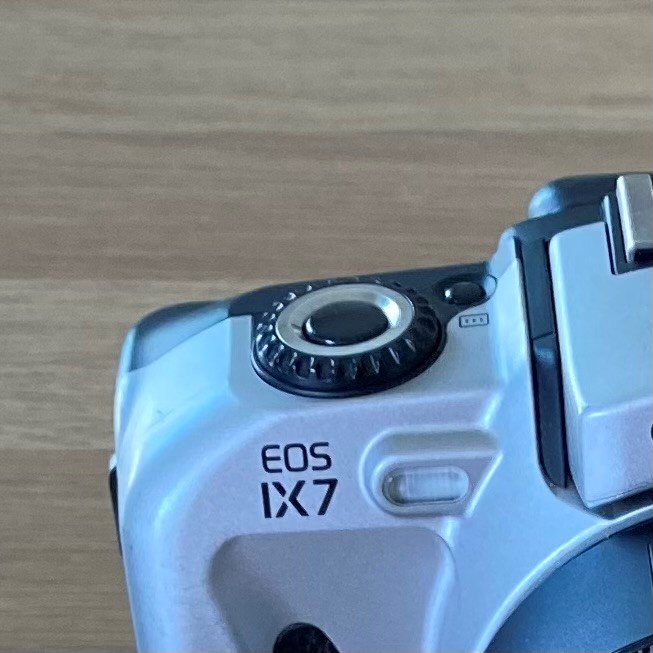
Most infuriating is the selection dial mounted around the shutter button. This is a control that is used constantly as it controls shutter speed and aperture. On the IX7 it rotates around the shutter, whereas normally it is embedded into the camera in front of the shutter button and simply scrolls from left to right. This subtle change makes for a really annoying user experience. As with the mode dial, it’s stiff and difficult to turn. In fact, there are times when it feels almost impossible to easily move with one finger. This is something you want to use without looking, keeping your eye to the viewfinder, but its really difficult to achieve this. Absolutely killer form over function design choice, and quite inexplicable considering how good Canon design was at this point in time.
Performance – What’s it like to use?
Performance is… average. Distinctly average. It doesn’t feel like you’re using an SLR, rather it has an air of point and shoot about it. That’s not to say it behaves like a toy or is useless, it’s just different. The focus speed is not great and there are times when it really hunts about for things, even in circumstances where light is good, it finds any surface without tonal difference difficult.
Shooting APS feels no different to any other film type, there’s basically nothing to do once it is loaded and pressing the shutter gives you a sound and feel just like a standard 35mm SLR from the same era. There’s nothing about the IX7 that makes you think “this is my next go-to film body.” It doesn’t excite or have that premium feel and, for me, part of the enjoyment in shooting film these days is that you get to use equipment that used to cost an arm and a leg and it feels like it should cost a fortune too, but actually costs you next to nothing.
Image quality
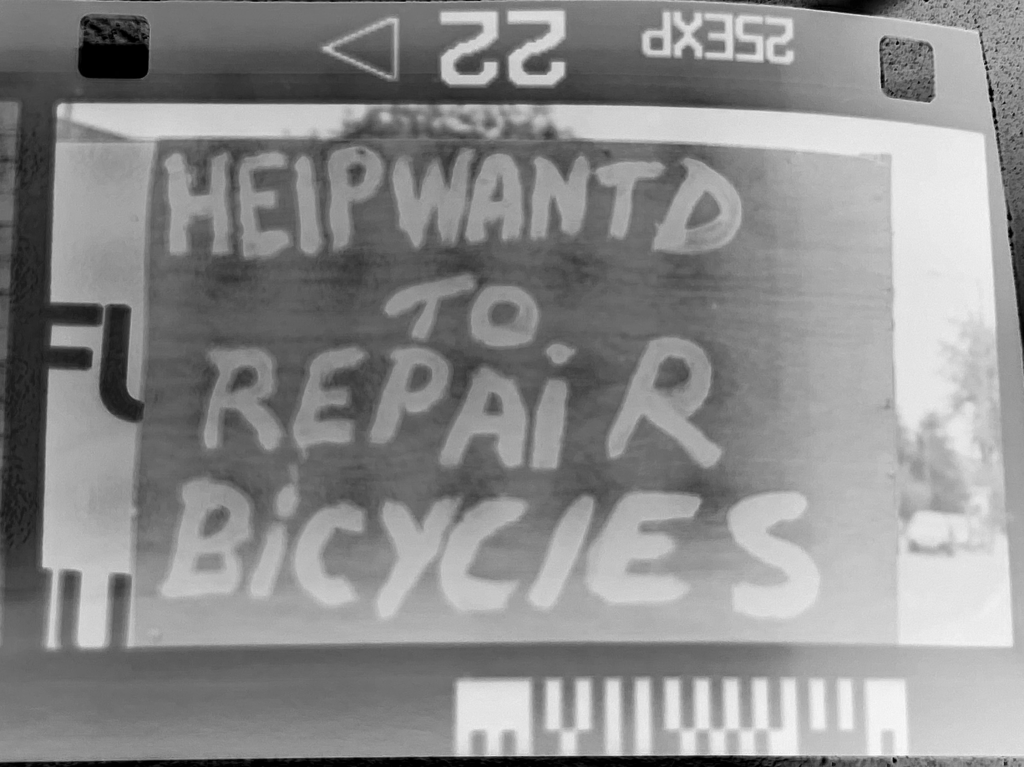
I need to address a rather large and obvious elephant in the room. I can’t really comment on the image quality because… well… I haven’t worked out how to scan the film yet.
The whole development process was somewhat more stressful than normal. I began by testing out a used roll of APS film that I happened to find at work. It was showing as fully exposed and ready to be developed so I assumed it was good to test out the process with. I loaded up the 3d printed reel in a dark bag which was easier said than done for two reasons. First of all, APS film doesn’t have sprocket holes so there is nothing for the reel to grip as it cranks the film on and second, the design of the reel makes it really prone to slightly coming apart. I didn’t know this until later.
After running it through a development process I opened the tank to find nothing at all. It came out as if it had not been exposed. Worse still, it had all fallen out of the reel and the clip that should hold the reel down had fallen off. There was a lot to learn here, and learn I did.
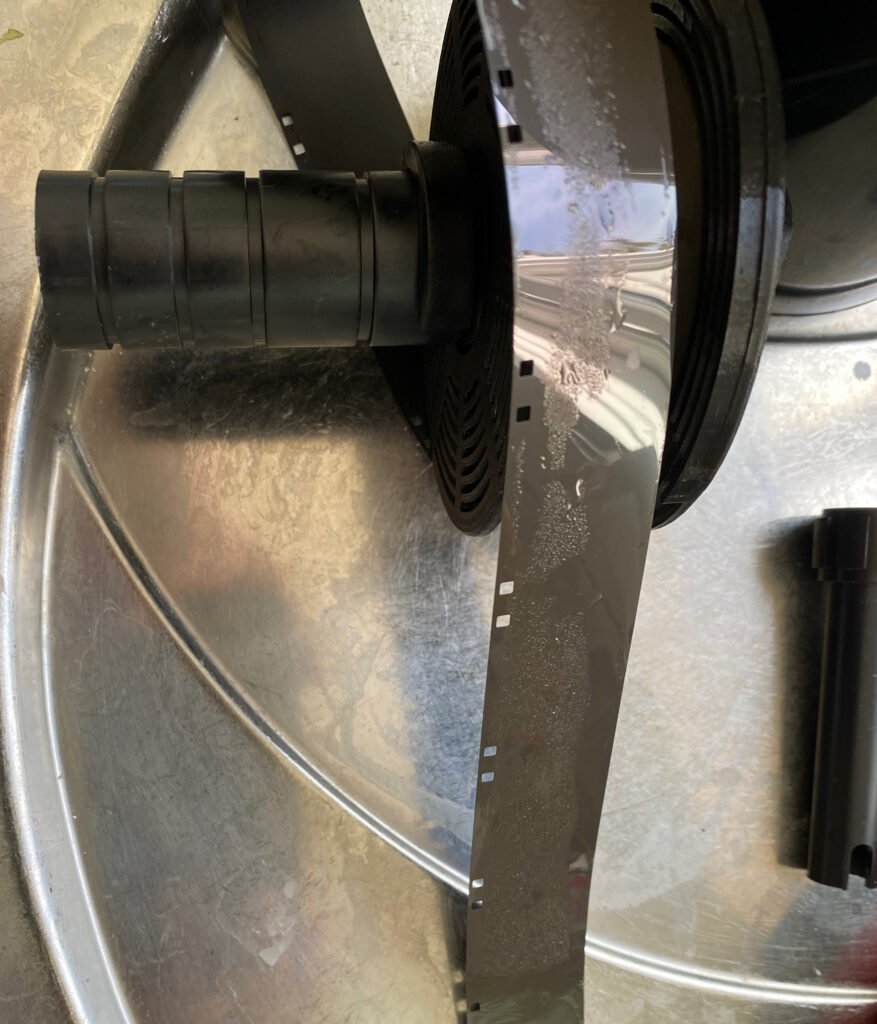
With the roll out of the IX7 I managed to load it with much greater ease and I remembered to firmly hold the reel together to stop the film popping out. Having successfully loaded the film, I then used the absolute minimum of movement and agitation during the development to stop anything from falling apart. I basically stand developed it in Rodinal for 18 minutes and it worked really well second time around.
Hanging the film to dry gave me the first glimpse of the frames that had been taken by the previous owner and I was happy with the results. It looked like the development time had been just about spot on and there appeared to be plenty of detail in the negatives.
Then I hit a wall. APS had a feature where once developed, the film cartridge would be returned to you with the developed film rolled back inside. This was meant to be a good thing – you can keep your negatives in a really compact form factor, dust free and just send them off to a lab any time you wanted more prints or enlargements. The knock on effect of these cartridges being designed in this way is that they were only ever meant to be opened by machines and therefore very, very few home scanners were ever built with the capability to scan APS.
Even if I did own an APS scanner, I’d still be in trouble because I’ve already destroyed the cartridge during the development process. I had the idea that I could just make a frame and stick it in my normal 35mm scanner, however when I tried this it just point blank refused to find any film to scan. I tried different scanning software and the best I got was a screen of white with the odd black dot. I knew it wasn’t a development problem, I could see the negatives clearly. There needed to be another way.
I tried a few methods of scanning the negatives on a flatbed scanner, but the resolution simply wasn’t high enough to be any use and the makeshift backlight I used wasn’t strong enough. In the end I resorted to a complete and utter bodge just to get something out so I could write this review without spending a fortune on APS scanning gear. That bodge, my friends, was seriously technical. I laid the negatives out over a construction light, held it as flat as I could with one hand whilst it wobbled about and then took a picture as close as I could with my phone. Yes. I know. Don’t tell me.
This gave me a negative image that, once adjusted in Photoshop, gave me a slightly blurry but “good enough” image that frankly would have to do.
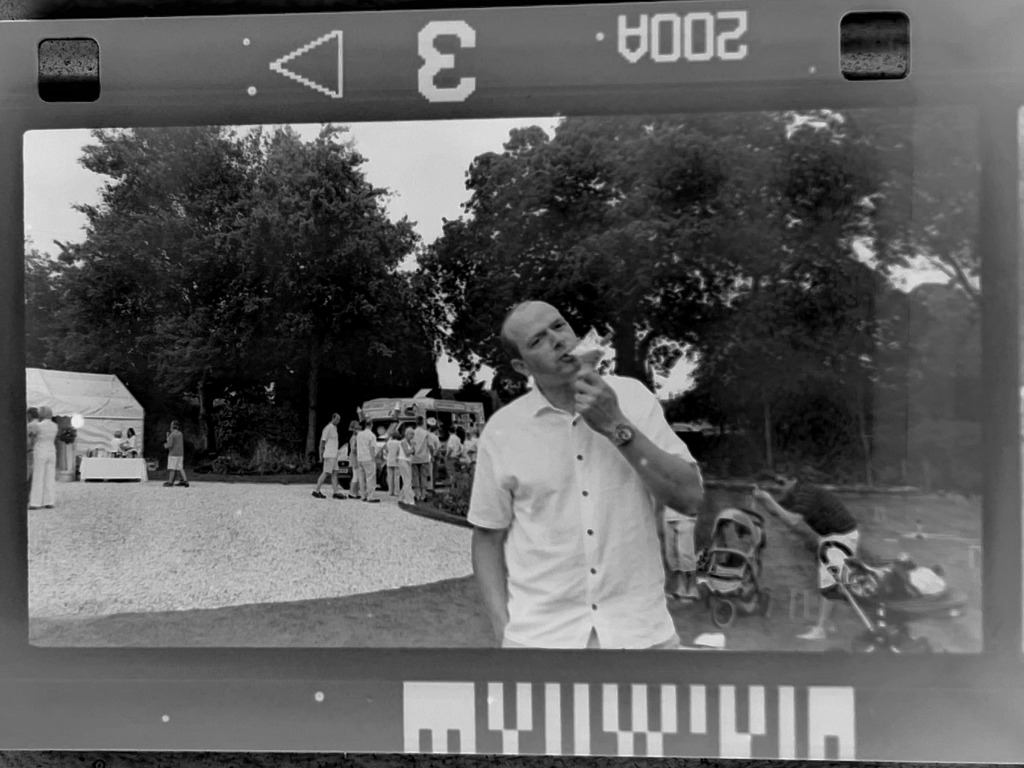
Conclusions and final thoughts
There’s no getting away from it, APS is dead. It’s dead, Dave, they’re all dead Dave, Dave they’re all dead.
There are many, many hurdles to overcome if you want to use one of these old APS bodies and ultimately you don’t actually benefit in any way from having gone through the process of sourcing scarce film, shooting it, buying specialist development kit and then finding a way to scan it (or even paying to have it scanned.)
The cost factor alone is enough to put me off APS, but more than this, there are no film cameras that I’m aware of that were either better than this or so good that I’d love to get my hands on one and give it another go. The scanning process is a nightmare unless you have either the correct scanner or you’ve forked out on a good macro lens so you can do the “photo and develop in Photoshop” process properly. I’m not sure I really understand the argument for using a DSLR to “scan” your negatives as the cost of a decent lens (and DSLR if you don’t have one) is extraordinary. The £300 it’d cost me to buy the appropriate lens would also buy me the best film scanner there ever was on ebay. This does not fit with the “thrifty film” mantra I am trying to adhere to, the thing that keeps this a fun hobby rather than a money pit obsession.
Finally, there’s the camera itself. It’s ok. It’s very late 90’s and that’s all I can really say about it. Canon did a decent job of trying to design something that had some tangible advantages such as significantly lighter weight than a normal SLR, a more compact and portable design for travel and all with the bonus of EF lens compatibility meaning you can strap some seriously expensive glass to the IX7.
But, ultimately, it just makes no sense. APS is a technology that the world just didn’t need.
If you fancy using APS, I’d say that you’ve got another year before film prices get so silly that you may as well just forget it. I’d also suggest that you get your film developed and scanned by a lab with the right kit because that way you will at least end up with some banging images you can get some decent prints from. Soon, however, all of this will be history so hurry up if it’s on your to do list.
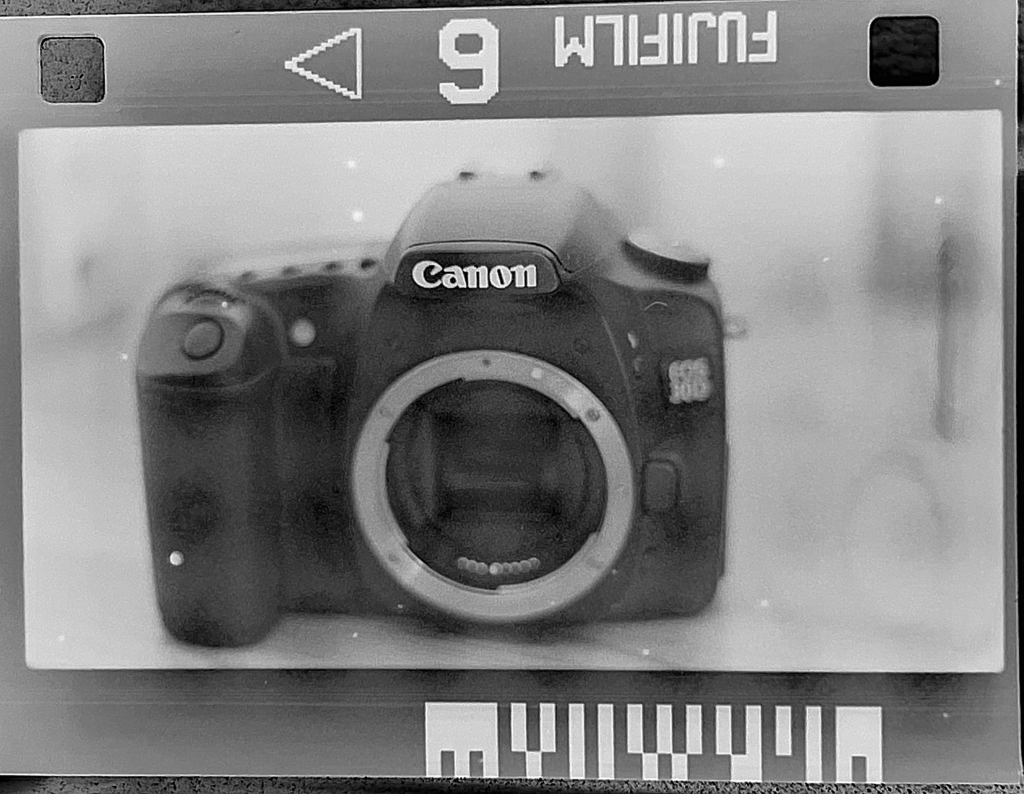
Sample image gallery

